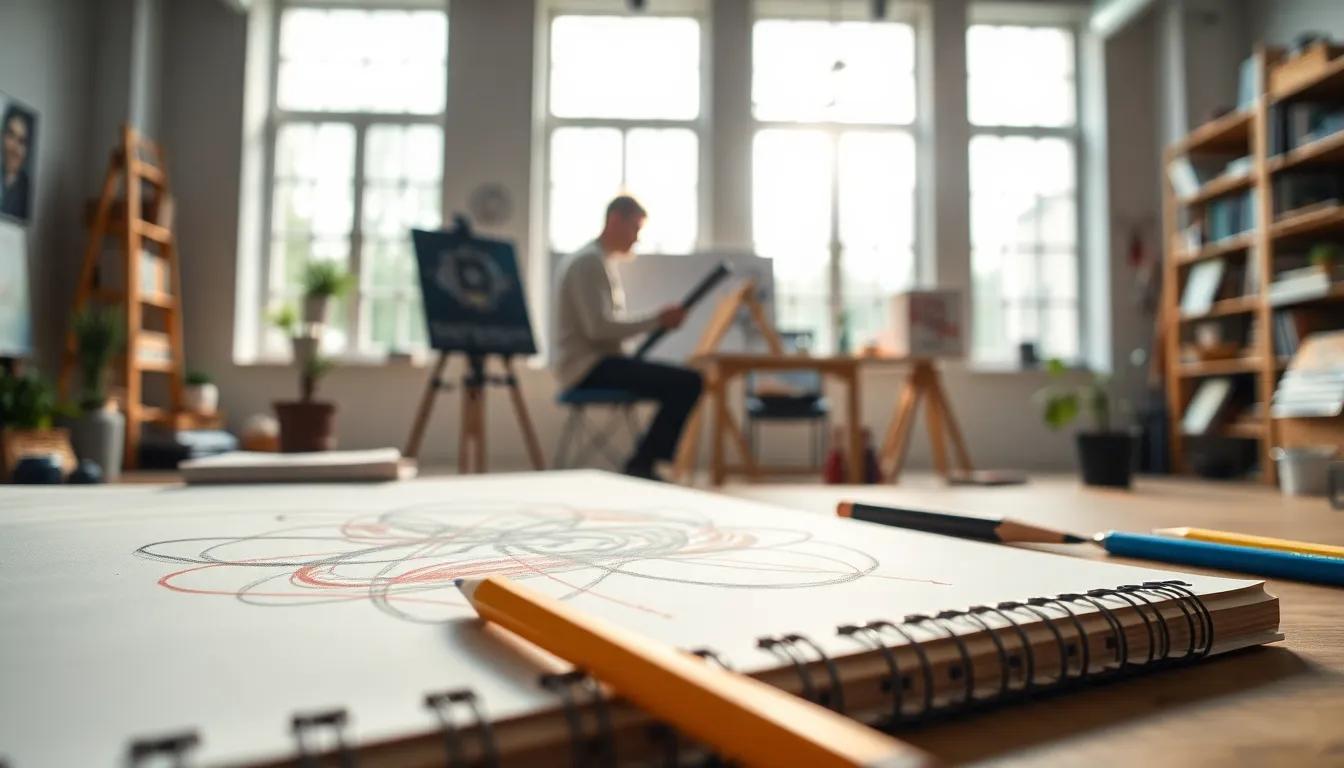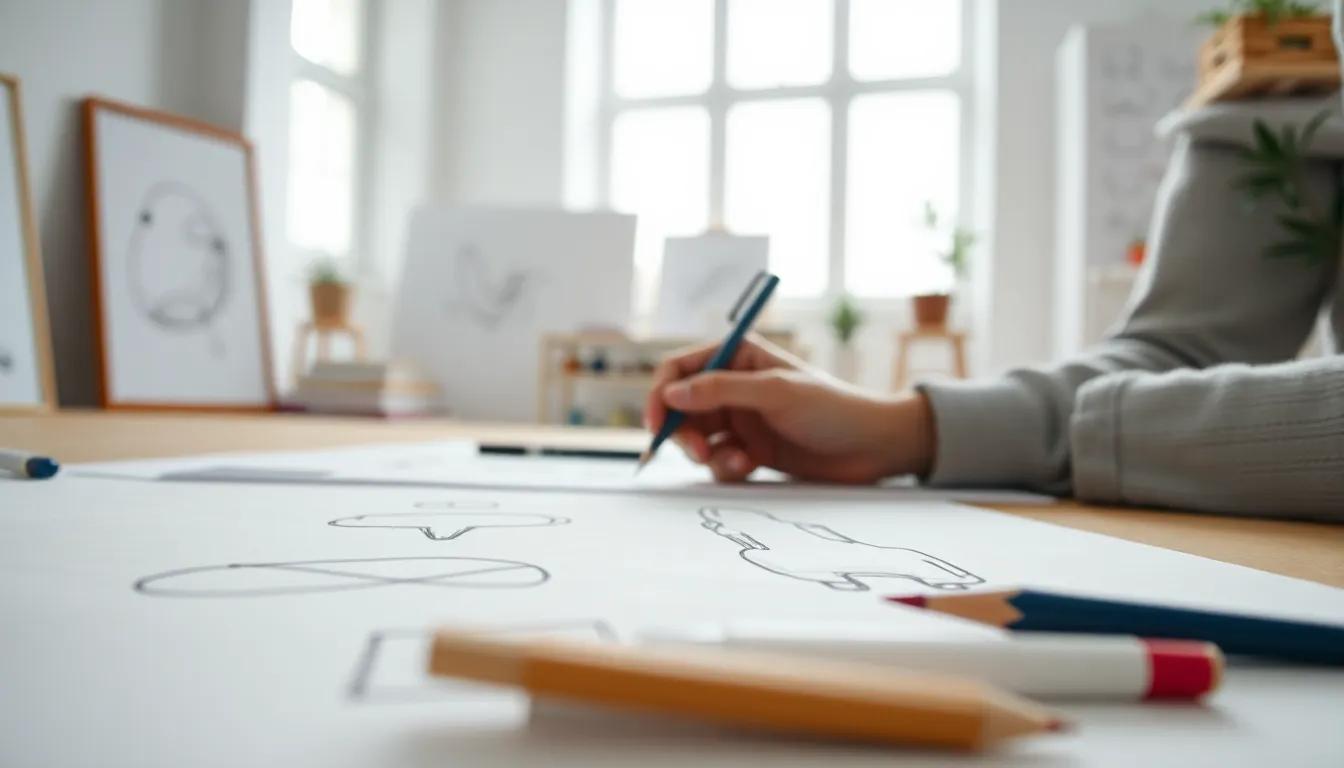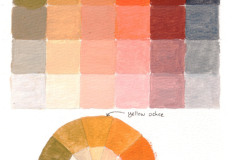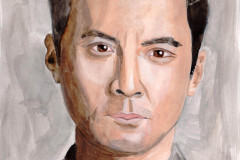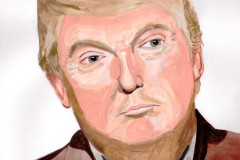Introduction
Sketchbooks are essential tools for artists, acting as both a canvas for raw creativity and a documentation of their evolving styles and ideas. This article will explore a range of sketchbook ideas designed to elevate your artistic journey. From experimenting with various mediums to focusing on imaginative themes, these concepts will help artists of all levels push their boundaries and engage deeper with their creative process.
Beyond traditional uses, sketchbooks serve as a beautiful repository of ideas, observations, and artistic explorations. They can capture fleeting thoughts, practice techniques, and even glimpse into the artist’s inner thoughts. This article will delve into different ways to utilize your sketchbook, opening the door to boundless creativity that can transform your art practice and serve as a source of inspiration for years to come.
The Role of a Sketchbook in Art The Importance of a Sketchbook for Artists
The sketchbook serves as a sanctuary for countless artists, a personal space where imagination runs wild, and experimentation becomes second nature. Within this bound collection of pages lies an invaluable tool for both beginners and seasoned creators. The act of sketching is not solely about producing finished pieces; it is a medium for exploration, where thoughts materialize in spontaneous and often unexpected forms. The sheer act of putting pencil to paper can spark inspiration that transcends the ordinary.
One of the primary functions of a sketchbook is to act as a visual diary, capturing fleeting ideas that might otherwise fade away. Artists frequently utilize their sketchbooks to document daily observations – be they mundane or extraordinary. This practice encourages a habit of seeing the world through an artistic lens, noting colors, forms, and shadows that inform future works. The ability to reflect back on these pages can provide insight into one’s evolving style and voice over time.
The sketchbook is an arena for experimentation, allowing artists to play with new techniques and ideas without the pressure of perfection. Mistakes can flourish into masterpieces, and seemingly trivial doodles may evolve into compelling compositions. By creating an environment where creativity flourishes unrestrained, an artist can break through creative blocks that often impede the artistic process. It invites the practice of trial and error, essential components of artistic growth that foster innovation.
The importance of a sketchbook extends beyond mere practice; it is a canvas for introspection. As artists sketch their thoughts and feelings, they confront their inner selves and engage more deeply with their creative motivations. This reflective aspect cultivates a richer artistic narrative, enabling the artist to communicate more effectively through their chosen medium.
Establishing a routine of regular sketchbook use can vastly enhance one’s artistic journey. Consider making it a part of daily life—carry it everywhere and take note of inspiration that strikes at unexpected moments. Each sketch, no matter how small or unfinished, contributes to a greater body of work and fosters continued development. Thus, embracing the sketchbook not only elevates artistic expression but also serves as a reminder that the journey itself is as valuable as the destination. Through each stroke and scribble, artists welcome growth, innovation, and profound self-discovery.
Techniques for Effective Sketching Maximizing Your Sketchbook Practice
Warm-Up Exercises to Kickstart Creativity
As every artist knows, the journey of creativity begins with warm-up exercises that stir the imagination and get the hand moving. These initial sketches serve as a crucial part of the artistic process, allowing artists to free their minds and loosen up their skills. One effective warm-up technique is the gesture drawing, which involves capturing the essence of a subject in a brief time, often just a few minutes. This method encourages spontaneity, helping artists embrace fluid lines and dynamic shapes without overthinking the details.
Another beneficial exercise is contour drawing. Here, participants focus on the outline of an object, using their eyes to trace its shape while keeping their hand moving on the paper. This practice sharpens observation skills and builds a stronger connection between what the artist sees and what they render on the page. Incorporating these forms of warm-ups into your sketchbook routine can significantly enhance both confidence and skill level.
Experimentation: Finding Your Unique Voice
Sketchbooks are also prime spaces for experimentation, encouraging artists to explore new techniques and materials without the fear of failure. One way to approach experimentation is through the use of mixed media. Artists can combine various materials such as watercolors, ink, colored pencils, and collage elements to develop unique pages. This fusion of techniques not only stimulates creativity but also allows for unexpected results that can inspire new directions in an artist’s work.
Don’t hesitate to explore different mark-making techniques. By utilizing tools beyond traditional pencils or pens—like brushes, sponges, or even fingers—artists can produce remarkable textures and effects. Creating a series of quick sketches that focus solely on these new methods provides a strong base for discovering personal style.
Consistency is key. Establishing a regular sketching habit, even if it’s just ten minutes a day, can fill your sketchbook with evolving ideas and techniques that reflect your artistic journey. Try cyclically revisiting old sketches, applying new techniques to older ideas, or even transforming failed pieces into fresh projects. The beauty of a sketchbook lies in its openness to change and growth, making it a perfect canvas for ongoing exploration.
Themed Sketchbook Projects Focused Exploration to Inspire Creativity
A New Way to Infuse Purpose into Your Sketchbooks
Themed sketchbook projects allow artists to focus their efforts on specific concepts, bringing coherence and inspiration to their artistic journey. By aligning your sketches around a unifying theme, you can stimulate your creativity and heighten your artistic expression. These projects also help to maintain motivation through defined objectives, encouraging you to push boundaries within your practice while fostering personal growth.
One popular approach is to choose a theme based on your interests or current life experiences. For example, if you are captivated by nature, consider a project dedicated to documenting the seasons as they change throughout the year. You can sketch seasonal landscapes, flora, and fauna, or even take a closer look at natural phenomena like rain or sunlight. By narrowing your focus, you may find new insights and perspectives that you might not have discovered otherwise.
Another effective method is to base your project around a specific color palette. Select a limited range of colors and challenge yourself to create a series of sketches that reflect that palette. This constraint can lead to exciting solutions as you learn to manipulate your chosen colors in different ways—adapting your style and even altering subjects, all while maintaining a cohesive visual experience. Play with color theory concepts such as complementary or analogous color schemes to discover surprising combinations.
Theme-based sketches can also center around various artistic styles or techniques that you wish to develop. For instance, you might dedicate a sketchbook to practicing one-point or two-point perspective. Each page could serve as an experiment with different styles or methods, allowing for progression and refinement while simultaneously reinforcing your understanding of fundamental concepts.
Consider exploring narrative themes. Develop a story through your sketches that evolve from page to page, where each drawing acts as a scene or character in a larger tale. This approach can foster an emotional connection with your work as you weave together visual storytelling elements, making the sketchbook not just a collection of images but a cohesive narrative experience.
Don’t shy away from collaborative themes. Engage with fellow artists to contribute to a communal sketchbook project, where each participant adds their unique twist on a common subject. This practice can ignite fresh ideas and broaden your artistic horizons, showcasing the power of shared inspiration.
Integrating Art Journaling into Your Sketchbook
The Emotional Depth of Art Journaling
Art journaling invites artists to engage not only with their visual skills but also with their inner selves. By seamlessly merging sketching with journaling, artists can create a powerful space where emotions and creativity intertwine. This approach allows for the exploration of thoughts and feelings through visual and written expression, enriching the artistic journey. In this practice, the sketchbook becomes more than just a repository of ideas; it transforms into a personal narrative that reflects one’s emotional and artistic evolution.
Incorporating art journaling into sketching can lead to a profound connection with one’s art. Artists can use their sketchbook pages to document personal experiences and ponder intricate themes. For example, an artist might spend time sketching a scene that resonates with a current emotion, then complement that visual with handwritten reflections. This combination can deepen understanding of the creative process, highlighting how emotions influence artistic expression.
Techniques for Merging Sketching and Journaling
There are numerous techniques artists can employ to blend sketching and art journaling effectively. Here are some ideas to inspire this integration:
- Visual Storytelling: Create a series of sketches that tell a story, incorporating text that captures the essence of each moment. This narrative approach can help artists convey complex feelings in a nuanced manner.
- Reflective Prompts: Use journaling prompts as a guide for sketches. For instance, write about a recent experience, then illustrate it, allowing the written reflection to inform the imagery, merging the two forms into a cohesive piece.
- Mixed Media: Experiment with various materials such as watercolor, collage, or even digital elements. Mixing techniques can spark new ideas and provide depth to both the visual and verbal aspects of the journal.
- Daily Sketch Challenges: Set a goal to sketch daily, integrating short journal entries that describe the emotional status surrounding each sketch. This consistent practice cultivates a deeper connection to the artwork.
The fusion of art journaling and sketching allows artists to not merely document their artistic journey but to truly understand themselves along the way. This process of self-discovery, where brush strokes meet words, can lead to a richer, more resonant approach to art that extends beyond the sketchbook pages and into the very essence of life itself. As the foundation for the next chapter on collaborative sketching, this individualized practice sets the stage for interpreting shared artistic experiences with others.
Collaborative Sketching A Creative Approach to Elevate Your Art Journey
Sharing Ideas and Techniques with Fellow Artists
Collaborative sketching can be a transformative experience for artists looking to expand their creative horizons. When several artists come together to work in the same sketchbook, they don’t just create a collection of individual styles; they give rise to a unique narrative that intertwines their ideas and techniques. This synergy allows for a fusion of various perspectives, making the sketchbook a vibrant tapestry of collective imagination.
One of the most inspiring aspects of collaborative sketching is the opportunity to learn from one another. Each artist brings their own set of skills and knowledge, which can significantly enhance the overall experience. For example, while one artist may specialize in detailed pencil work, another could be adept in bold ink or watercolor techniques. By exchanging tips and demonstrating different methods, artists can broaden their toolkit, gaining fresh insights that may lead to new personal styles or approaches. This exchange is not limited to just techniques; it can also include concepts, themes, and narrative structures.
The act of sharing a sketchbook fosters a sense of community among participants. As artists contribute to a common piece, they create connections that resonate beyond their art. This collaboration allows artists to feel less isolated in their practice, enabling them to celebrate each other’s successes and challenges. The shared experience often leads to constructive feedback and encouragement, bolstering their creative confidence and pushing each other toward new artistic ventures.
Encouraging Risk-Taking and Experimentation
Working alongside fellow artists can inspire a bolder approach to creativity. The pressure of collaboration encourages individuals to take risks they might otherwise shy away from when working solo. In a collaborative sketchbook, an artist may feel more inclined to try out that daring color palette or unconventional composition because there’s a shared mutual belief in breaking boundaries. This becomes an environment where experimentation is not only accepted but celebrated.
There is also a profound benefit to documenting the evolution of the collaborative piece. Observing how the sketchbook transforms over time—through a plethora of techniques, styles, and ideas—can serve as a rich record of growth for each artist involved. This visual chronicle, reflective of their shared journey, makes for a cherished keepsake that couples artistic expression with personal stories.
Collaborative sketching invites artists to break free from their comfort zones, enriching their artistic expression while fostering an environment of support and creativity. Engaging with others within this medium not only generates captivating artwork but also cultivates lifelong friendships rooted in a shared passion for art.
Exhibiting and Sharing Your Sketchbooks Public Platforms for Artistic Expression
Sharing Your Art Journey
Many artists find joy in sharing their sketchbooks as a reflection of their creative journey. Publicly showcasing your sketches can inspire others, foster community engagement, and invite constructive feedback. The act of sharing is not merely about displaying finished pieces; it highlights the process of exploration, experimentation, and growth that occurs in the pages of a sketchbook. In this chapter, we will discuss various platforms and strategies to exhibit your artwork and invite dialogue about your creative expressions.
Utilizing Social Media
Social media platforms have become a vital channel for artists to showcase their works and connect with a global audience. Instagram stands out as a dynamic space for visual content, allowing artists to share real-time snapshots of their sketchbook pages. Here are some ideas to maximize your social media presence:
- Regular Posts: Create a dedicated schedule for posting, such as #SketchbookSundays or #WorkInProgress Wednesdays, to keep your audience engaged.
- Story Highlights: Use parts of your story highlights to categorize different themes, techniques, or projects reflected in your sketchbook.
- Interactive Elements: Leverage polls and questions in your stories to engage your audience, asking for their interpretations or feedback on specific sketches.
Beyond Instagram, platforms like Pinterest allow artists to curate boards that can visually narrate their artistic processes, while Twitter can be used for sharing thoughts and insights related to your sketches. A cohesive online presence can draw in followers who are genuinely interested in your work, creating a supportive community around your artistic endeavors.
Exhibiting in Local Venues
While digital exposure is essential, consider exhibiting your sketchbooks in local galleries, cafes, or community centers. Here are some engaging ways to present your work:
- Pop-Up Exhibitions: Organize informal events where you can showcase selected pages in a comfortable setting, encouraging conversations with visitors.
- Artist Talks: Host discussions about your creative process and sketchbook practices, allowing for deeper insights into your journey.
- Collaborative Shows: Partner with other artists to present a cohesive narrative or theme across multiple sketchbooks, celebrating the value of shared artistic experiences.
As you begin to exhibit and share your sketches, keep in mind that every sharing experience is a chance to learn and grow. Each interaction can provide valuable insights into your craft, inspiring your next steps in maintaining a sustainable sketchbook habit.
Maintaining a Sketchbook Habit Strategies for Sustaining Your Art Practice
Establishing a consistent sketchbook practice requires dedication and discipline, but the rewards it brings to your artistic journey are invaluable. The first step in creating this habit is to define your objectives. What do you wish to achieve through your sketchbook? Whether it’s improving your drawing skills, exploring new techniques, or documenting your life, having a clear purpose will guide your practice. Setting specific goals can help you maintain focus and deepen your artistic expression.
Consider incorporating a routine into your sketchbook practice. Setting aside dedicated time each day or week for sketching can transform it from an occasional activity into a regular habit. Find a time that works for you, whether it’s a few moments in the morning with your coffee or an hour in the evening to unwind. Consistency is key, so treat this time as an important appointment. You might also designate a specific location for your sketching; this could be a cozy nook at home, a local café, or a park—an environment that inspires creativity.
Another effective strategy is to experiment with prompts and challenges. This can provide fresh inspiration and encourage exploration beyond your usual themes. Look for drawing challenges online or create your own monthly themes, such as “faces,” “nature,” or “favorite memories.” You can use prompts from various platforms or swap ideas with fellow artists. Frequent engagement with different subjects will push you out of your comfort zone and expand your artistic repertoire.
Documenting your growth is also essential for maintaining motivation. Regularly revisiting earlier sketches allows you to see your progress and recognize improvements over time. Consider maintaining a timeline within your sketchbook that charts your artistic evolution. Additionally, blending reflective practices—writing about your thoughts during each session—can enhance your understanding of your journey and provide clarity in your artistic direction.
To further bolster your sketchbook habit, connect with other artists. Joining a local art group or participating in online communities creates accountability and offers support. Sharing your work can encourage regular practice and provide valuable feedback, which adds to the learning experience. Ultimately, building and sustaining a sketchbook habit is about creating a personal space for reflection and growth, propelling your artistic journey forward with intention and enthusiasm.
Reflecting on Your Artistic Journey Understanding Your Growth Through Your Sketchbook
Recognizing Patterns and Themes
Regular reflection on your sketchbook contents serves as a powerful tool for understanding your artistic growth and evolution. Periodically revisiting past entries allows you to identify recurring motifs, themes, and styles that emerge over time. These patterns can reveal not only your technical progression but also the shifting subjects and concepts that resonate with you. By keeping track of the things that inspire you, you open a door to nurturing your artistic identity.
Documenting Milestones
Your sketchbook is a visual diary, chronicling critical milestones in your artistic journey. Make it a habit to highlight specific achievements or breakthroughs within its pages. These can range from mastering a new technique to creating a piece that particularly excites you. Celebrating these moments not only enhances your confidence but also creates a tangible record of your evolution as an artist. When you look back, you will see how each step, however small, contributes to your overall progress.
Critical Self-Assessment
Engaging in periodic self-assessment is key to realizing the value of your sketchbook. Consider setting aside time to reflect critically on what you have drawn or painted. Ask yourself questions such as: What worked well in this piece? What didn’t resonate? What can I improve upon next time? This introspective analysis can lead to significant revelations, guiding you toward the next stages of your development. Documenting your self-assessments in your sketchbook can also create a reference for future projects.
Encouraging Experimentation
Reflection can also inspire you to push boundaries and experiment with new mediums, styles, or subjects. Your sketchbook is an ideal space for playful exploration; when you note what aspects intrigued you during past reflections, you can channel that curiosity into new endeavors without the pressure of expectations. Experimentation leads to growth, and your reflections can fuel the desire to take artistic risks that ultimately elevate your skills and creativity.
Connecting with Your Artistic Voice
The process of reflecting on your sketchbook helps you connect with your artistic voice. As you chart your paths and reconsider past choices, you can uncover what authentically speaks to you and what might feel disingenuous. This connection fosters a deeper understanding of your art and its place in the world. Furthermore, it can guide your future projects, revealing how to hone your unique style and engage with your audience meaningfully.
Conclusions
Using sketchbooks as a creative outlet not only fosters artistic growth but also allows for self-exploration and expression. By implementing the sketchbook ideas outlined in this article, artists can discover new techniques, themes, and media, enriching their artistic toolbox. The commitment to regularly engage in this practice can lead to significant enhancement in one’s artistic abilities.
A sketchbook is more than just a collection of drawings; it is a personal journey that mirrors your growth as an artist. By embracing the ideas presented, you can cultivate a meaningful sketchbook practice that fuels your passion for art, encourages innovation, and inspires new creations.



